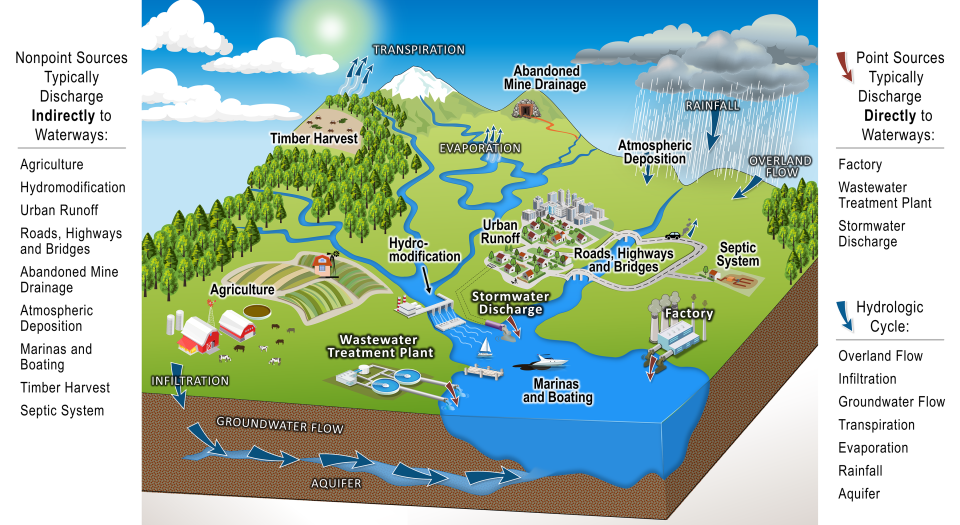Types of Nonpoint Source Pollution
On this Page:
Overview:
Nonpoint source (NPS) pollution is any source of pollution that does not meet the point source definition under the Clean Water Act. Nonpoint sources are runoff from rain or snow melt carrying natural and anthropogenic pollutants to waters, such as lakes, rivers, wetlands, coastal waters and groundwater. NPS areas of focus are driven by particular land uses. Under Section 319 of the Clean Water Act, states, territories and Tribes must identify categories of sources of NPS pollution as part of an assessment report required for obtaining a Section 319(h) grant. The links below provide information on these source categories, and on practices to reduce the impacts of NPS pollution in each of those categories. This diagram illustrates examples of nonpoint and point source pollution along with elements of the hydrologic cycle. The links below provide information on these source categories, and on practices to reduce the impacts of NPS pollution in each of those categories.

Developed by the EPA, Office of Water, Nonpoint Source Program
Download the above diagram in a screen-reader compatible format: Sources of Pollution Diagram (pdf)
Navigate to Types of NPS Pollution:
Agriculture
Activities on working farms and ranches can affect water quality, both locally and across multi-state watersheds.

Forestry
Forestry activities such as removal of streamside vegetation, road construction and use, timber harvesting, and mechanical preparation for the planting of trees can impact water quality.
Hydro modification and Alteration
Hydromodification activities include channelization and channel modification, dams, and streambank and shoreline erosion.
Marinas and Boating
Coastal waterways may become contaminated with pollutants generated from the various activities that occur at marinas—such as boat cleaning, fueling operations and marine head discharge.
Resource Extraction (Abandoned Mines)
Abandoned mine drainage is water that is polluted from contact with mining activity, and normally associated with coal mining.

Roads Highways and Bridges
Erosion during and after construction of roads, highways and bridges result in the deposition of sediment or chemicals that can smother aquatic habitat and impact waterways.
Urban Areas
Urbanization increases the variety and amount of pollutants carried into our nation's waters.
Wetland/Riparian Areas.
It is important to preserve and restore wetlands and riparian areas because these areas can play a significant role in managing adverse water quality impacts.






